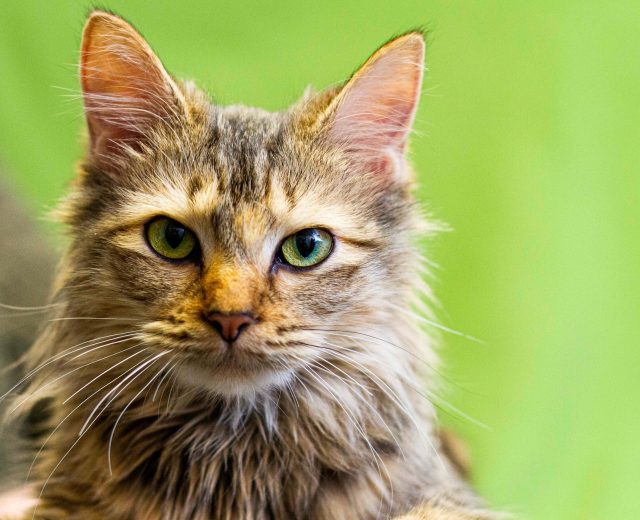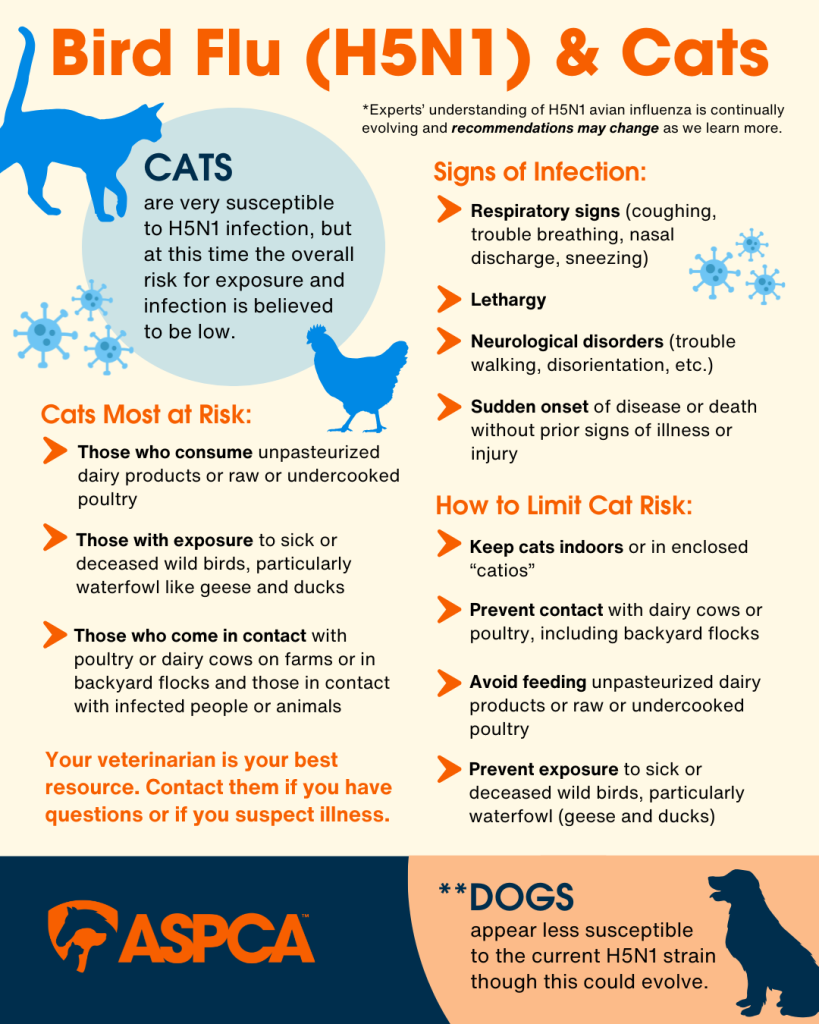H5N1 and Cat Safety: What You Need to Know
At Tree House Humane Society, the health and well-being of our cats—and the people who love them—are our top priorities. Given recent discussions around H5N1 (bird flu), we want to provide clear, factual information about what this means for our resident and community cats and how you can keep your own pets safe.
Understanding H5N1 and Cats
H5N1, commonly known as bird flu, is a type of influenza virus that primarily affects birds. While rare, it has been known to infect mammals, including cats. However, the risk remains low, and there are proactive steps you can take to protect your feline friends.


How We’re Keeping Tree House Cats and People Safe
Our expert veterinary and animal care teams are closely monitoring the situation and following the latest guidance from animal health organizations and the CDC. As part of our ongoing commitment to safety, we continue to follow these protocols:
- Routine health checks and thorough medical records.
- Staff & volunteers wear PPE and follow strict hygiene protocols when handling cats.
- Sick cats are cared for in a dedicated isolation ward until our veterinarian assesses them to rule out an H5N1 infection.
Taking simple precautions can help protect your cat
No vaccine is available yet to protect cats against H5N1. While the risk is low, it’s still important to reduce exposure. Here’s what you can do to protect pet cats:
- Keep cats indoors to limit exposure to infected birds.
- Thinking of feeding raw or freeze-dried meat or unpasteurized dairy products? Check with your vet first—these can increase H5N1 risk.
- Prevent contact with poultry or dairy cows.
- Stay informed and consult your veterinarian with any concerns.
Infographic courtesy of ASPCA.
Keeping Your Community Cat Colony Healthy
The risk of H5N1 in managed cat colonies is low, especially in areas with little to no virus circulation. However, locations near infected poultry, dairy cows, and waterfowl may pose a higher risk.
- Feed outdoor cats only enough that they will consume right away—avoid leaving plates or trash around that may attract wildlife.
- Watch for signs of infection, like loss of appetite or respiratory issues.
- If you suspect a cat may have avian influenza, consult your veterinarian right away.
- Stay informed about local H5N1 updates and be ready to adjust caregiving practices if necessary.
FAQs
WHAT ARE THE CLINICAL SIGNS OF H5N1 IN CATS?
Symptoms include loss of appetite, lethargy, respiratory issues (coughing, sneezing, nose/eye discharge, difficulty breathing), and neurological signs (tremors, incoordination, seizures, vision loss).
IS TREE HOUSE TESTING CATS FOR H5N1?
We are closely following veterinary guidance and will take the necessary precautions if cases are suspected. Currently, there is no widespread recommendation for routine testing in shelter settings.
WHAT SHOULD I DO IF MY CAT COMES INTO CONTACT WITH A DEAD OR SICK BIRD?
Contact your veterinarian immediately for guidance. Monitor your cat for any signs of illness, such as respiratory issues or loss of appetite.
CAN H5N1 SPREAD BETWEEN CATS OR FROM CATS TO HUMANS?
Fortunately, it is highly unlikely for cats to spread H5N1 to each other at this time. In rare cases, prolonged, unprotected exposure to an infected cat could pose a risk to humans. The best way to prevent any risk is to keep cats indoors and avoid contact with infected wildlife.
WHERE CAN I FIND MORE INFORMATION ON THE CURRENT H5N1 SITUATION?
For updates, visit chicago.gov or cdc.gov/bird-flu


